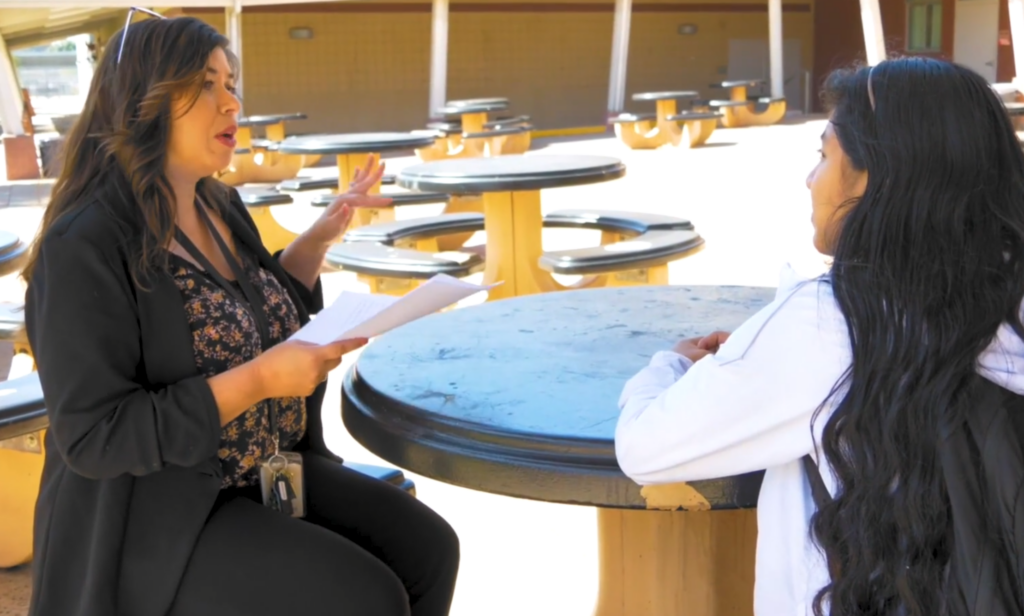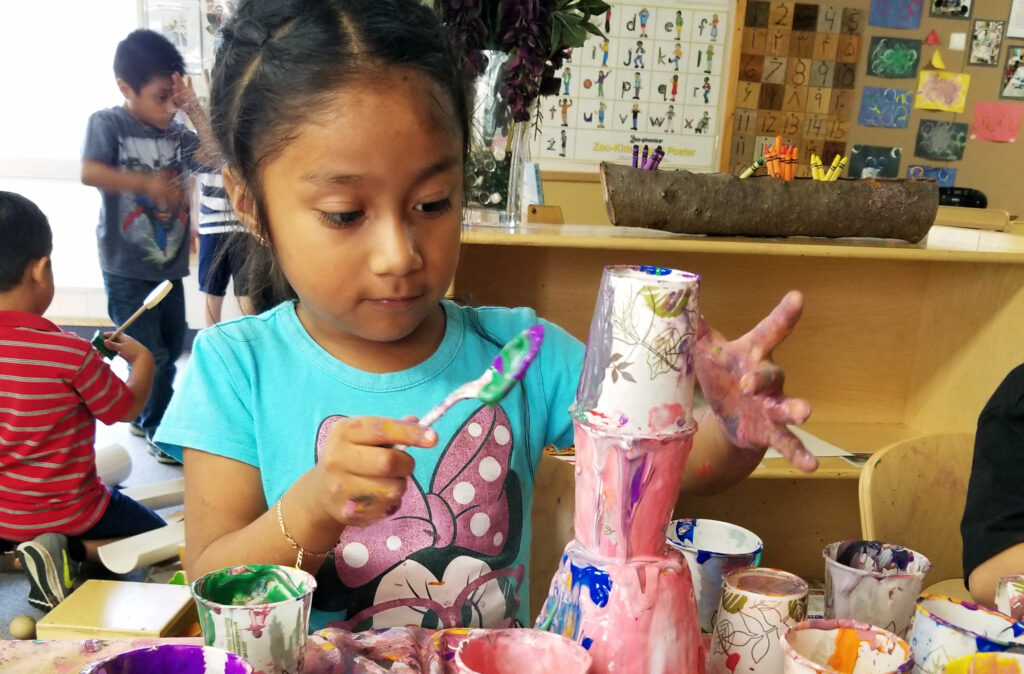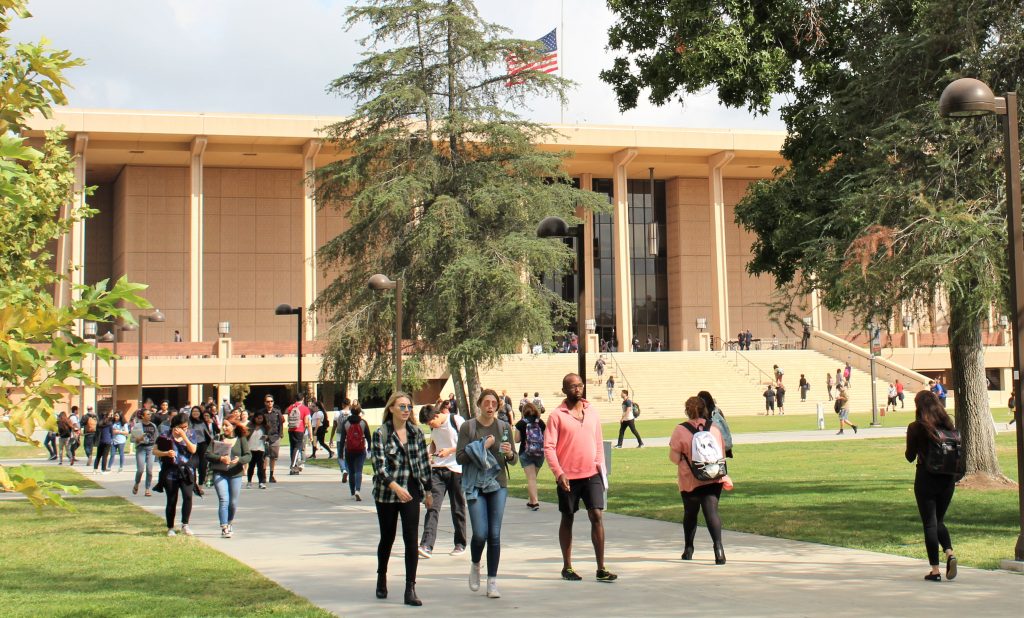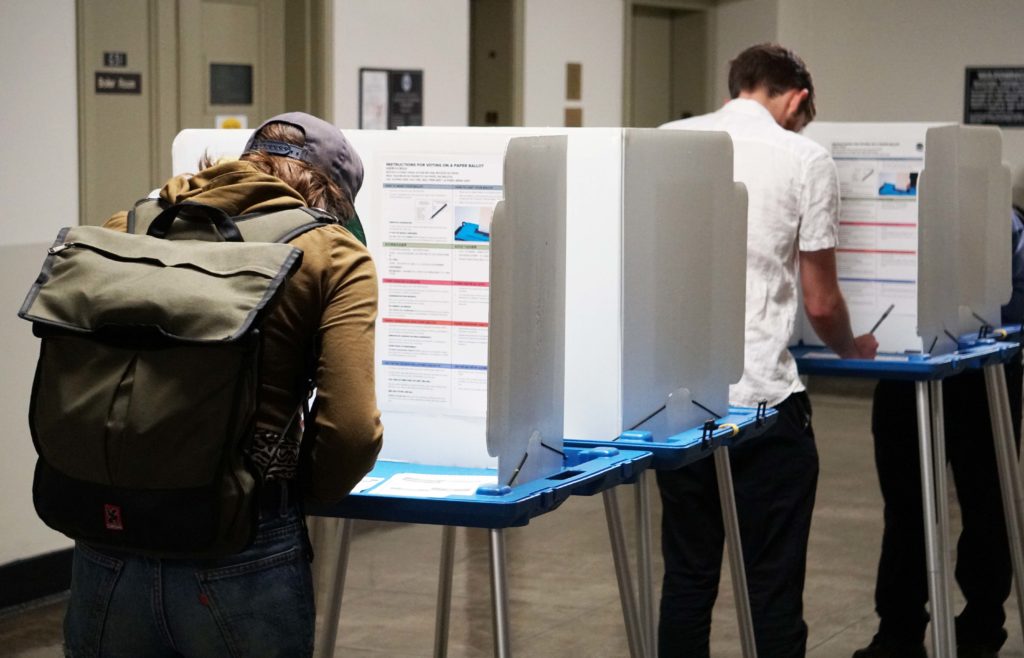
Sandra Figueroa, navigator of Lovonya DeJean Middle School’s newly-launched Parent Center, meets with a student on campus.
Credit: Contra Costa County
Lovonya DeJean Middle School, located in the heart of Richmond, has its share of obstacles. Most of its 400 students struggle with poverty, and the challenges that come with that can affect their attendance, test scores and overall learning outcomes.
But a newly launched community resource center at DeJean will go a long way toward providing additional support to families who struggle to meet basic needs, in hopes of improving student outcomes.
The Parent Center, which officially opened on Sept. 21, serves as a regional hub where students and their families can receive assistance in obtaining resources like health insurance, food stamps and cash assistance.
On Oct. 24, the center also started technology assistance sessions — offered in English and Spanish — where parents can learn computer skills. They will receive a free laptop after attending four of these two-hour sessions. Additional sessions are scheduled on Nov. 2, 7 and 14, from 5 to 7 p.m.
According to John Gioia, the county supervisor for Contra Costa County’s District 1, the city of Richmond and West Contra Costa Unified School District have been working together for several years to provide resources like the Parent Center for student families. District spokesperson Liz Sanders said such collaboration is vital to provide resources to school communities.
“We know that in order to meet the needs of the whole child and the whole community, we need resources in partnership beyond our own resources as a school district,” Sanders said.
Sandra Figueroa, the Parent Center’s navigator, is the first to be funded by Measure X, a 20-year half-cent sales tax that was approved by Contra Costa County voters in 2020. The approximately $110 million in annual tax revenue goes toward community services like the county hospital, health centers and early childhood services.
Employed by Contra Costa County’s Employment & Human Services department, Figueroa is one of five Measure X-funded “4 Our Families” navigators who each represent one of the county’s supervisorial districts. Figueroa’s work varies day to day, but she’s always working with families to ensure they have access to and are using available community resources, whether it’s expediting access to Medi-Cal insurance, getting legal help or finding grief assistance for families suffering a loss. She said the Parent Center is “the puzzle piece that was missing” at DeJean.
Figueroa said DeJean’s students struggle with a variety of challenges at home that affect their learning at school. Many are learning English as a second language, and some are undocumented immigrants, with parents who are often scared to apply for benefits out of fear of being deported, or are unaware that they’re eligible for them. Some students, without access to health insurance, have vision or dental problems that can make it difficult for them to focus in school.
“If students are having an attendance or behavioral problem, there’s something probably happening in the home,” Figueroa said.
Figueroa hopes her position as navigator and the new Parent Center will help parents find solutions to issues happening at home, subsequently leading to improved student outcomes. As a local to Richmond and an employee of Contra Costa County for 31 years, she feels like the DeJean Parent Center is where she belongs.
Sanders said the DeJean Parent Center aligns with WCCUSD’s community schools initiative. The school district has employed the community schools strategy since 2007 and received $30 million from the state in May 2022 to support the initiative. The most recent contract between WCCUSD and the teachers union includes, for the first time, language about shared decision-making for community schools.
The Parent Center, Sanders said, “really fits into the broader programming of community schools at West Contra Costa by making sure that we’re serving the whole community while we’re serving the whole child,” Sanders said.
Community schools focus on the “whole child,” and under the strategy, districts and schools collaborate with teachers, students and their families to improve overall student learning and success. According to the California Teachers Association, community schools implementation can lead to lower rates of absenteeism; better work habits, grades and behaviors; higher enrollment in college prep classes; and higher graduation rates.
“When the family is doing better, the children are doing better,” Gioia said. “The idea is to treat the family as a whole unit. If the family has access to better health and social services, the parents and the children are all doing better.”









